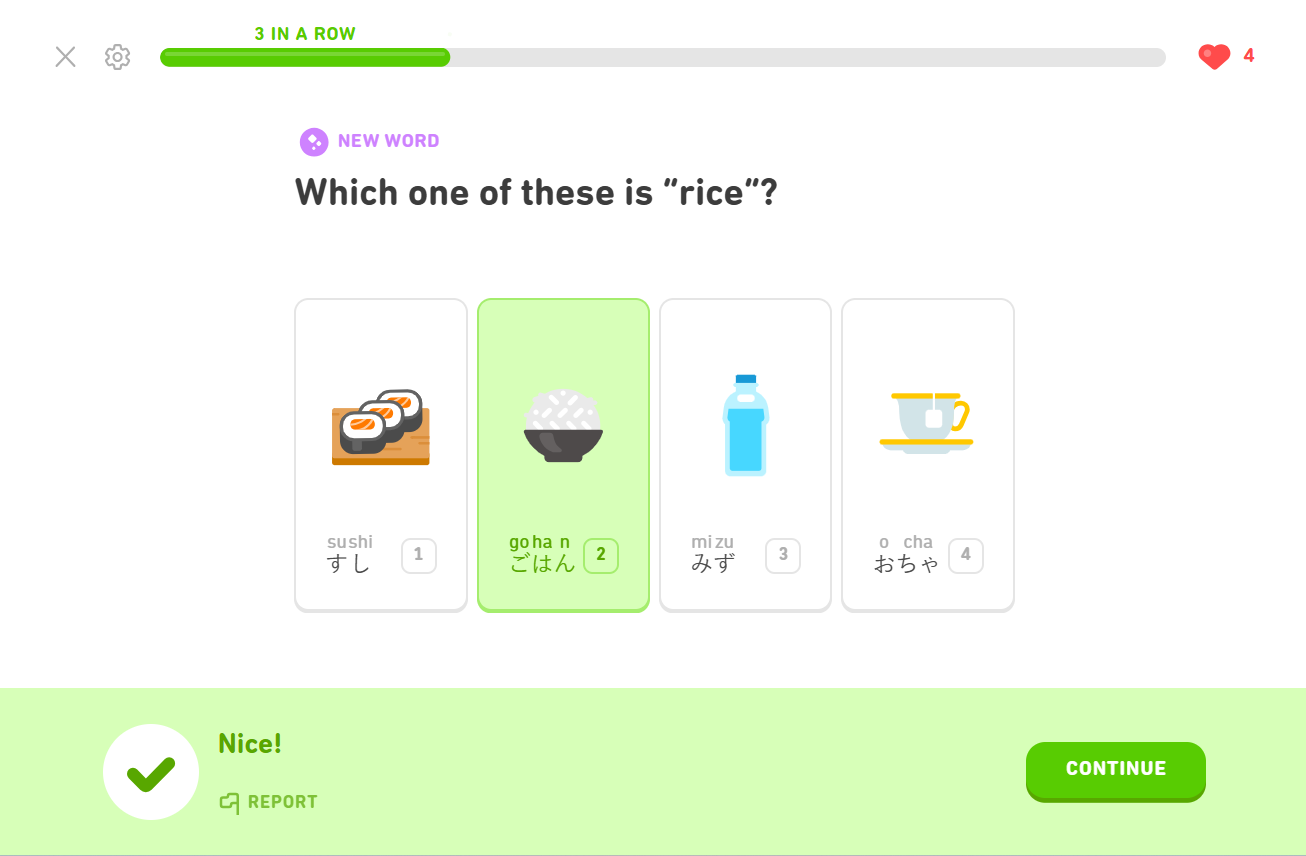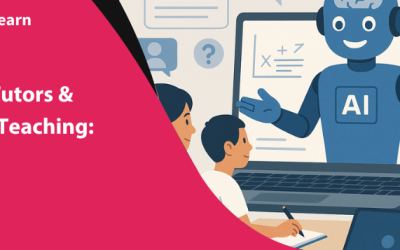How Tutoring Businesses Can Use Data Analytics to Double Student Success?
Data analytics has lately been showing a huge impact in enhancing learning experiences. From personalized learning to cutting down administrative burden, crunching numbers has never been more effective!
Educators no longer spend hours on spreadsheets to track attendance or evaluate test scores. Now, dashboards, reports, and adaptive tools pull in data and define a student’s progress narrative within seconds. Well, that’s not all! Predictive analytics can actually foresee whether the learner will struggle or succeed in the future! Interesting, right?
Let us understand how to use data analytics in tutoring businesses and drive more engaging and positive learning experiences.
TL;DR
- Data analytics in tutoring is the process of gathering and using all platform data and feedback to enhance learning outcomes.
- The crucial learning analytics data are: lesson completion rate, time spent, test scores, attendance, feedback, and financial metrics.
- From personalized learning paths and predictive analytics to instant feedback loops and data-driven decision making for educators, analytics can enhance learning outcomes.
- From a business perspective, analytics guides educators to optimize course modules, predict student success and identify high-performing content.
What is Tutoring Business Data Analytics?
Tutoring data analytics is the process of collecting and using all data – student, business, tutor and feedback information to improve learning outcomes. These data points indicate three key aspects: tutor performance, learner engagement and student satisfaction.
Here are the key learning analytics data for business growth:
- Lesson competition rate
- Time spent on learning materials
- Test scores and grading
- Lesson completion rate
- Attendance
- Tutor feedback
- Revenue metrics like revenue per student, CAC,
- Student retention rate
- Learning pace and style
Why is Tutoring Business Data Analytics Crucial?
Data analytics is essential for running a successful tutoring business. It collects data on how tutors teach, how much learners grasp, and their performance metrics. Beyond that, it helps businesses to track revenue and engagement and make data-driven decisions.
Here’s how tutoring data analytics helps in the long run:
-
Understanding the Learner’s Needs and Strengths
Analytic tools and platforms gather raw data, such as student scores, engagement, attendance, completion rates, etc. Based on these insights, the system can evaluate the learner’s style, pace and improvement areas.
-
Better Learning Outcomes
When students get personalized lessons and feedback based on their individual performance, they excel in their academics. Further, predictive analytics informs educators about students in need of support and attention.
-
Improve Communication & Transparency
Clear data-backed reports and feedback leave no room for doubts and build transparency. For example, parents can look into the dashboards and reports showing the learner’s performance to validate the feedback reports.
-
Gain a Business Edge in Industry
Analytics helps to optimize content flows, personalized learning, and revenue insights. These data insights guide in making smarter decisions and streamlining the platform operations.
8 Strategies for Tutoring Business Data Analytics to Double Student Success
Here are key strategies for leveraging tutoring data analytics for better learning outcomes:

1. Personalized Learning
Traditional learning focuses on a one-size-fits-all approach and doesn’t consider the learner’s style and preferences. Data analytics identifies individual learners’ needs, learning gaps and preferences and adjusts their content accordingly.
How does analytics help?
- Customized learning paths based on the learner’s style, pace, and strengths
- Adaptive learning platforms recommend the right lesson, quiz, and activities based on real-time progress
- Adjusting pace based on learning, based on the learner’s potential
- Real-time feedback, such as improvement areas, errors, and behavioural trends
For example, a particular student is struggling with quadratic equations but scoring high on probability. Then, the system creates a lesson plan with more practice and a detailed explanation for quadratic equations.
2. Predictive Analytics for Early Intervention
Learning analytics has evolved to predict a student’s future outcome. It considers factors such as attendance, scores, engagement patterns, time spent on activities, and interactions to identify the students at risk of dropping out or failing.
How does analytics help?
- Early intervention systems to flag students at risk of falling behind
- Assess their activity levels and spot out inactive learners
- Additional support by recommending content to improve the learning outcome
- Education can adapt to learning styles and use motivational strategies
This timely intervention helps students to gain additional support before it is too late.
3. Course Optimization
Analytics can consider student interactions and help educators optimize their courses.
For example, if a course has a significant drop-off, analytics can point out the section where the maximum learners discontinue. So, accordingly, educators can create micro-modules to keep up the engagement.
How does analytics help?
-
- Identify the high and low-performing modules
- Indicate the most challenging module that needs to be revised
- Drop-off points in a video lecture
- Most skipped materials or lessons
- Lesson competition rates
- Content personalization by adjusting modules based on difficulty
Educators get frequent insights from analytics and optimize the course as per learner behaviour.
⚡ Related: Best AI tools for Creators
4. Feedback and Assessment
A standard quiz and feedback design for all kinds of students? Does it work for modern learners? While traditional learning uses the same set of questions, personalized learning includes adaptive assessments.
How does analytics make it happen?
- Automated grading and adaptive assessment based on the student’s ability
- Personalized feedback from assessments, quizzes, and sessions
- Indicates problem areas, common mistakes, and designs tailored to modules
- Adjust assessment difficulty based on learner performance
- Quick and real-time feedback aids educators in optimizing tutoring style
Students in the same class are at different stages of learning. Analytics collects accurate learner data and creates adaptive tests so students don’t find the questions too easy or difficult. And systems can use this data to suggest reflective learning and follow-up activities.
5. Boost Student Motivation & Engagement
How to make lesson modules fun and interactive? Well, using learning analytics data systems can offer a more personalized, engaging, and adaptive learning experience.
How can analytics help?
- Personalized learning plans, tests, and topics of interest based on the learner’s needs
- Gentle reminders and feedback based on learner behaviour
- Gamification includes features like streaks, badges, leaderboards, and points
- Progress indicators like completion percentage, milestones, and level-ups
Businesses can offer such insights through tool tips, prompts, or even emails, fueling motivation.

For example, if learners spend more time on a specific question or task, the system can provide hints or detailed explanations. This helps learners not only to figure out the right answer but also to grasp the concept properly.
6. Monitoring & Tracking Student Progress
Keeping track of all of the students’ data might feel like an uphill battle! But analytics simplifies the process. It tracks students’ progress from dashboards, performance metrics, and historical data. It offers insights into how well the student is performing and also engagement levels.
How can analytics help?
- Streamline all student data from dashboards, LMS, live tutoring sessions, and more
- Spot patterns, trends or high-performing data segments
- Predictive analytics that alert at-risk students or those who would outperform
- Custom reports on students’ strengths, improvement areas and high-performing topics
- Track learning pace and compare with benchmarks
Thus, analytics makes data easily accessible and speeds up the monitoring. Based on these insights, educators can provide support and even avoid drop-offs.
⚡ Related: How to build an engaging student dashboard?
7. Smart Marketing & Business Decisions
Data analytics is not only useful for learners, but it’s also quite insightful for tutoring businesses. Educational institutions or platforms can make sound business decisions with analytics.
For example, a high engagement and revenue from a specific course signal high revenue potential.
How can analytics help?
- Smart tutor scheduling based on actual demand
- Use AI for price optimization based on trends and opportunities
- Spot high-demand subjects, niches and courses for targeted marketing campaigns
- Identify best-selling courses or packages and refine pricing or sell bundles
- Find the best pricing model, popular add-ons and features
- Analyze the existing content and refine it as per learner behaviour
- Predictive analytics to visualize future growth, demand, seasonal trends, etc
Data analytics is the backbone of modern educational platforms. It offers a bird’s-eye view of your business and taps into trends and opportunities early. The result? A smoother, streamlined operation ensures long-term success!
8. Empower Educators with Data-Driven Insights
Educators are always in search of making their teaching more efficient and effective. With analytics, they get data-driven insights on how effective their teaching and resources are.
How can analytics help?
- Find the teaching strategies leading to the best results
- Optimize the course content based on the learner’s pace and performance
- Blend analytics with the flipped classroom model to drive engagement
- Tailored assessments based on the learner’s difficulty level, incorrect responses, time taken, etc
- Enhance parent communication by aiding in writing tasks, feedback reports, and grading
Analytics is a powerful tool to reduce the administrative burden of educators and to efficiently deliver content.
Tools for Leveraging Data Analytics in Tutoring Business
Here are the common tools for data analytics in the tutoring business:
| Data Analytics Tools | Usage |
| Dashboards & reports | Tutoring dashboards collect data from different sources and help to spot trends and patterns. |
|
Adaptive Tutoring Tools (E.g., Smart Sparrow, Knewton,Dreambox) |
Personalize content and quizzes based on learner behaviour |
|
LMS (Learning management system) (E.g., Moodle, Canvas, TalentLMS) |
Helps to track student progress, performance and engagement |
|
Assessment & Test Analytics Tools (e.g., Kahoot, Quizlet, Socrative) |
Dedicated test tools for quizzes and surveys that captures progress reports and insights |
|
Communication Tools (Zoom, Google Meet, Lessonspace) |
Analyze student interactions, track attendance, and engagement patterns |
|
CRM (E.g., Zoho, Hubspot, Salesforce) |
Tracks leads and maintains data of existing students |
|
Marketing tools (E.g., Google Analytics, Semrush ) |
Insights on audience and market trends to run campaigns and increase ROI |
Conclusion
Data analytics are evolving as an irreplaceable part of future education. With advancements in technology and AI, leveraging analytics has become easier. Blending analytics into tutoring platforms aids in every aspect, including tutoring, learning and administration.
Analytics converts the raw data into actionable insights that lead to better learning experiences. To conclude, as we move into a data-driven world, embracing analytics is the ideal way for sustainable growth ahead!
FAQ-Related to How Tutoring Businesses Can Use Data Analytics to Double Student Success
1. How to leverage data analytics to improve student outcomes?
Here are the different ways to use data analytics to improve student outcomes:
- Personalized learning paths based on the learner’s style, pace and strengths
- Predictive analytics aiding early intervention
- Course optimization based on learner engagement
- Instant feedback loops and custom reports
- Enhance engagement and motivation with data-driven insights
- Empower educators with data-driven decisions
- Smart Marketing and Business Decisions
- Monitoring progress with dashboards & tracking tools
2. What are the key learning metrics for a successful tutoring business?
These are key KPIs for a successful tutoring business:
- Student success rate
- Course completion rate
- Revenue metrics
- Learner engagement
- Churn rate
- Session attendance
- Tutor performance
3. Do small tutoring businesses need data analytics?
Yes, even small tutoring businesses need data analytics. This helps them to offer personalized learning, boost engagement and aid educators with data-driven insights. These businesses can use dashboards, reports, CRM, and progress tracking to collect data insights.





